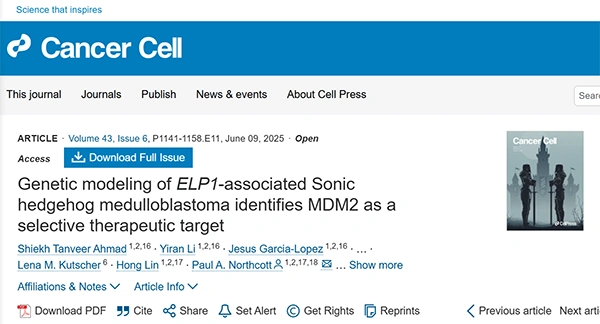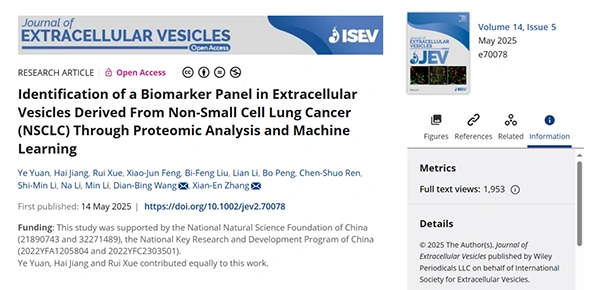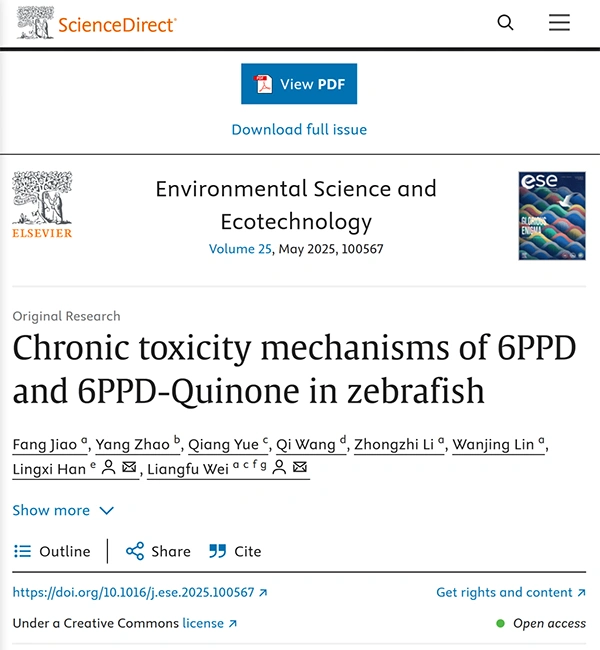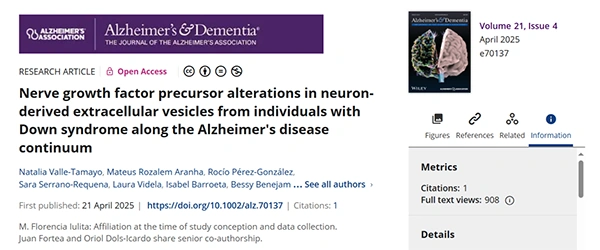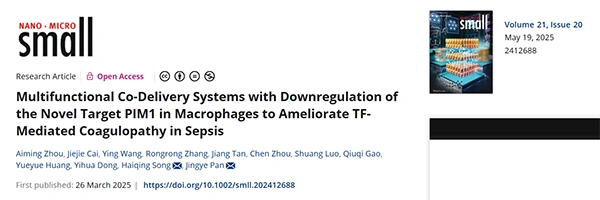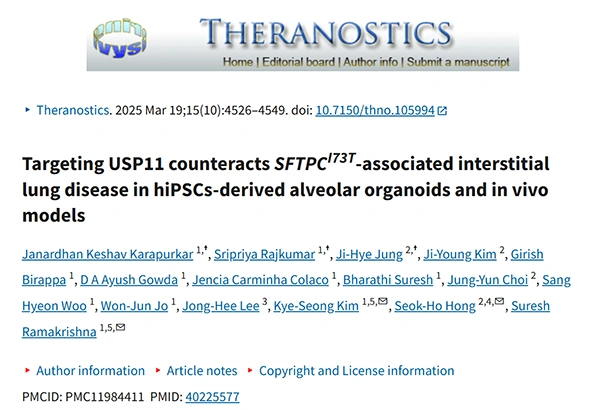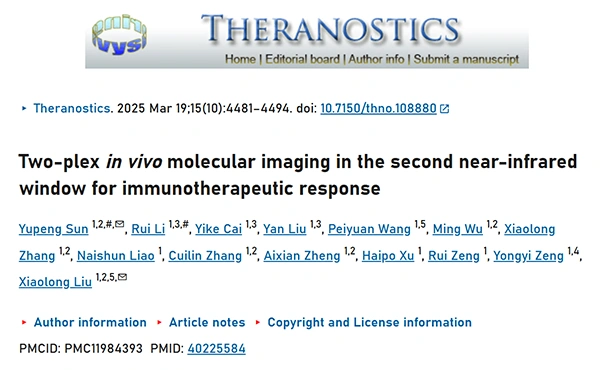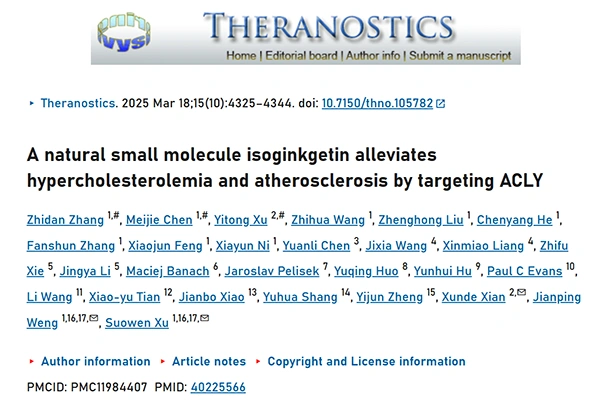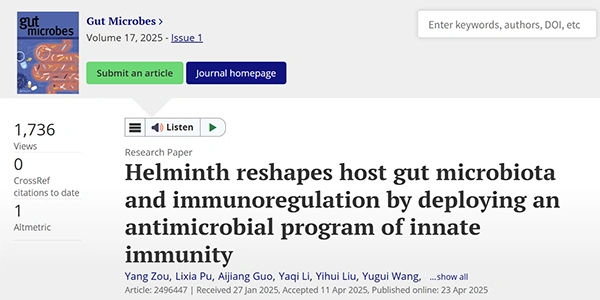Thank you for your continued support of CUSABIO! In the second quarter of 2025, articles related to CUSABIO products were published in excess of 800. The total number of articles has now reached 27,000.
Thank you for choosing CUSABIO research products on your scientific research journey. Your trust and support are deeply appreciated. We will continue to work hard to provide you with even better products and services.
Now, let's take a moment to share these wonderful research results.
CUSABIO Quarterly Citation Review
01 Genetic modeling of ELP1-associated Sonic hedgehog medulloblastoma identifies MDM2 as a selective therapeutic target
Impact Factor: 48.8
Journal Name: Cancer Cell
CUSABIO Citation Product:
ELP1 Antibody; CSB-PA011571LA01HU
Research Highlights:
This study genetically modeled ELP1-associated Sonic Hedgehog medulloblastoma (SHH-MB) and found that ELP1 heterozygous mutant mice exhibit genomic instability, mitotic defects, and differentiation stalling in granule neuron precursors (GNPs). Further experiments using orthotopic transplantation and patient-derived xenograft (PDX) models revealed dampened p53 signaling in ELP1-mutant tumors. Pharmacological inhibition of MDM2 significantly prolonged survival in ELP1-mutant SHH-MB mice, identifying MDM2 as a potential therapeutic target for ELP1-associated medulloblastoma.
02 Identification of a Biomarker Panel in Extracellular Vesicles Derived From Non‐Small Cell Lung Cancer (NSCLC) Through Proteomic Analysis and Machine Learning
Impact Factor: 15.5
Journal Name: Journal of Extracellular Vesicles
CUSABIO Citation Product:
Human Poliovirus receptor(PVR) ELISA kit; CSB-EL019093HU
Research Highlights:
This study identified a biomarker panel in extracellular vesicles (EVs) derived from non-small cell lung cancer (NSCLC) through proteomic analysis and machine learning. The study found significantly higher levels of CD155 in plasma EVs from NSCLC patients compared to healthy individuals. Using CD155 as a bait protein, CD155+ tumor-derived EVs (TDEVs) were enriched from the plasma of NSCLC patients. Targeted proteomics identified a panel of seven proteins (MVP, GYS1, SERPINA3, HECTD3, SERPING1, TPM4, and APOD) that demonstrated excellent diagnostic performance for NSCLC, achieving an AUC of 1.0 with 100% sensitivity and specificity. These findings highlight the potential of this biomarker panel for the clinical diagnosis of NSCLC.
04 Chronic Toxicity Mechanisms of 6PPD and 6PPD-Quinone in Zebrafish
Impact Factor: 14
Journal Name: Environmental Science and Ecotechnology
CUSABIO Citation Product:
Recombinant Human Peroxisome prolifeRator-activated receptor gamma (PPARG); CSB-EP018424HUf0
Research Highlights:
This study investigates the chronic toxicity mechanisms of 6PPD and its oxidation product 6PPD-quinone in zebrafish. Results show that 6PPD accumulates primarily in the liver, while 6PPD-quinone targets the brain. Both compounds impair zebrafish growth, induce hepatic damage, and disrupt locomotor behavior. Transcriptomic analysis reveals disturbances in lipid and carbohydrate metabolic pathways, with downregulation of PPARγ and upregulation of pro-inflammatory cytokines TNF-α and IL-6. Molecular dynamics simulations and surface plasmon resonance experiments further demonstrate direct binding to PPARγ, elucidating the hepatotoxic mechanisms. The study highlights the hepatotoxic risks of 6PPD and 6PPD-quinone to aquatic life, with 6PPD-quinone exhibiting greater toxicity.
05 Nerve growth factor precursor alterations in neuron‐derived extracellular vesicles from individuals with Down syndrome along the Alzheimer's disease continuum
Impact Factor: 13
Journal Name: Alzheimer's & Dementia
CUSABIO Citation Product:
Human CD81 antigen(CD81) ELISA kit; CSB-EL004960HU
Research Highlights:
This study investigates alterations in nerve growth factor precursor (proNGF) in neuron-derived extracellular vesicles (NDEVs) from individuals with Down syndrome (DS) along the Alzheimer’s disease (AD) continuum. ProNGF levels increased with age and were higher in both asymptomatic and symptomatic DS individuals compared to healthy controls, with the highest levels in symptomatic individuals. ProNGF correlated significantly with cerebrospinal fluid (CSF) p-tau181 and plasma neurofilament light chain (NfL), suggesting its potential as a biomarker for monitoring AD progression in DS.
06 Multifunctional Co‐Delivery Systems with Downregulation of the Novel Target PIM1 in Macrophages to Ameliorate TF‐Mediated Coagulopathy in Sepsis
Impact Factor: 13
Journal Name: Small
CUSABIO Citation Product:
Human Proto-oncogene serine/threonine-protein kinase pim-1(PIM1) ELISA kit; CSB-E11825h
Mouse thrombin-antithrombin complex,TAT ELISA Kit; CSB-E08433m
Mouse Fibrinogen,Fbg ELISA Kit; CSB-E08202m
Mouse D-Dimer,D2D ELISA Kit; CSB-E13584m
Research Highlights:
This study identified PIM1 as a key gene in sepsis through bioinformatics and clinical research, showing a significant positive correlation with coagulation factors. In a sepsis mouse model, the PIM1 inhibitor SMI-4a reduced TF release by inhibiting mTOR phosphorylation, improving coagulopathy and lung injury. Based on these findings, a multifunctional co-delivery system MPDA@SMI-4a@PEI/siPIM1@GM was developed. It targets macrophages, effectively downregulates PIM1 expression, and improves sepsis-induced coagulopathy and acute lung injury, significantly increasing survival rates.
07 Targeting USP11 counteracts SFTPCI73T-associated interstitial lung disease in hiPSCs-derived alveolar organoids and in vivo models
Impact Factor: 12.4
Journal Name: Theranostics
CUSABIO Citation Product:
SFTPC Antibody; CSB-PA021174GA01HU
FN1 Antibody, FITC conjugated; CSB-PA13187C0Rb
Research Highlights:
This study investigates the therapeutic potential of targeting USP11 in interstitial lung disease (ILD). It was found that USP11 stabilizes and extends the half-life of the SFTPC protein, particularly the mutant SFTPCI73T, leading to alveolar epithelial dysfunction and pulmonary fibrosis. Using CRISPR/Cas9, researchers introduced the SFTPCI73T mutation into hiPSC-derived alveolar organoids and demonstrated that USP11 depletion significantly mitigates fibrosis caused by this mutation. Furthermore, USP11 inhibitors, such as mitoxantrone, effectively prevent and treat pulmonary fibrosis in both in vitro and in vivo models, offering a new therapeutic target for ILD.
08 Two-plex in vivo molecular imaging in the second near-infrared window for immunotherapeutic response
Impact Factor: 12.4
Journal Name: Theranostics
CUSABIO Citation Product:
Mouse Interleukin 6,IL-6 ELISA Kit; CSB-E04639m-IS
Mouse Tumor necrosis factor α,TNF-α ELISA KIT; CSB-E04741m
Research Highlights:
This study develops a two-plex in vivo molecular imaging technique in the second near-infrared window (NIR-II) to simultaneously monitor CD8+ T cells and PD1 levels in tumors. Utilizing non-overlapping fluorescence from indocyanine green (ICG) and PbS/CdS quantum dots (QDs) targeting PD1 and CD8+ T cells respectively, the method enables dynamic monitoring of tumor immunophenotypes. Results reveal heterogeneous distributions of PD1 and CD8+ T cells across tumor types and indicate that low PD1 and high CD8+ T cell levels predict better anti-tumor effects. This non-invasive imaging approach offers a new way to predict immunotherapy efficacy, potentially complementing traditional biopsy-based diagnostics.
09 A natural small molecule isoginkgetin alleviates hypercholesterolemia and atherosclerosis by targeting ACLY
Impact Factor: 12.4
Journal Name: Theranostics
CUSABIO Citation Product:
Mouse oxidized low density lipoprotein,OxLDL ELISA Kit; CSB-E07933m
Research Highlights:
This study investigates the effects of a natural small molecule, isoginkgetin (ISOGK), on hypercholesterolemia and atherosclerosis. ISOGK targets ATP citrate lyase (ACLY) to inhibit its enzyme activity, thereby reducing cholesterol and fatty acid synthesis. In animal models of atherosclerosis induced by high cholesterol diets, ISOGK significantly decreased aortic plaque areas and lipid accumulation, and lowered plasma and hepatic cholesterol and triglyceride levels. ISOGK also demonstrated good safety profiles in vivo and in vitro. This research provides a promising basis for developing novel lipid-lowering drugs.
10 Helminth reshapes host gut microbiota and immunoregulation by deploying an antimicrobial program of innate immunity
Impact Factor: 12.2
Journal Name: Gut Microbes
CUSABIO Citation Product:
Mouse Cramp ELISA Kit; CSB-E15061m
Mouse Regenerating islet-derived protein 3-gamma(REG3G) ELISA kit; CSB-EL019549MO
Research Highlights:
This study reveals how helminths manipulate the host's innate immunity to reshape the gut microbiota and regulate immunoregulation. It was found that during helminth infection, the antimicrobial peptide CRAMP is highly expressed in macrophages, selectively killing gram-negative bacteria to provide ecological niches for lactobacilli expansion, thereby enhancing the host's immunosuppressive response. Additionally, the study discovered that vitamin D can influence this process by regulating CRAMP expression, offering new insights for the treatment of helminth infections and related diseases.
► Click here to view more citations
CUSABIO team. CUSABIO Quarterly Citation Review: 800 New Product Citations in Q2, Total Citations Hit 27,000!. https://www.cusabio.com/c-21245.html


